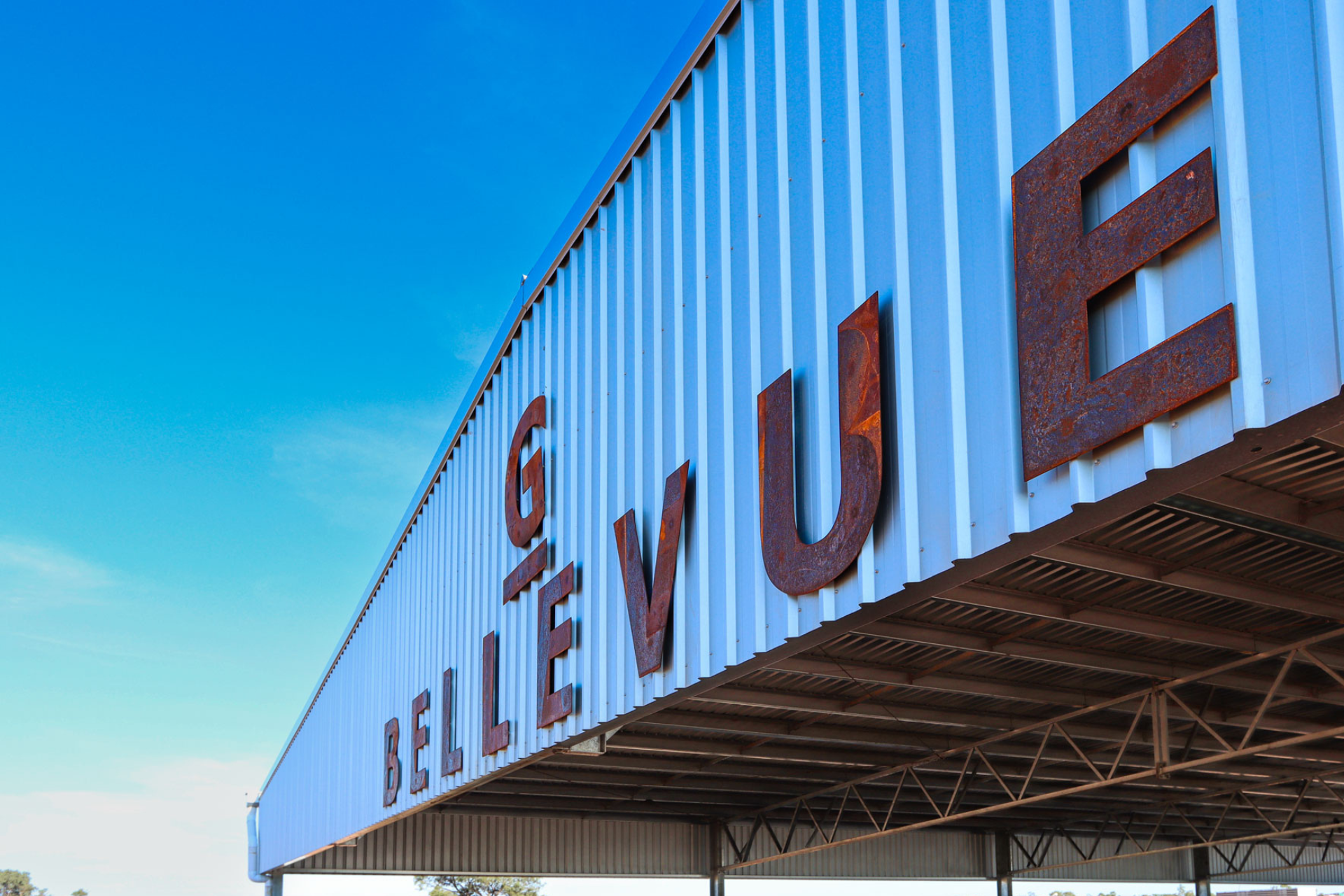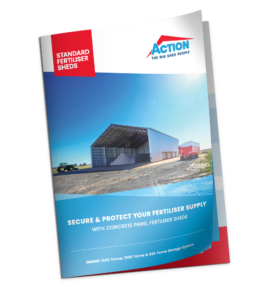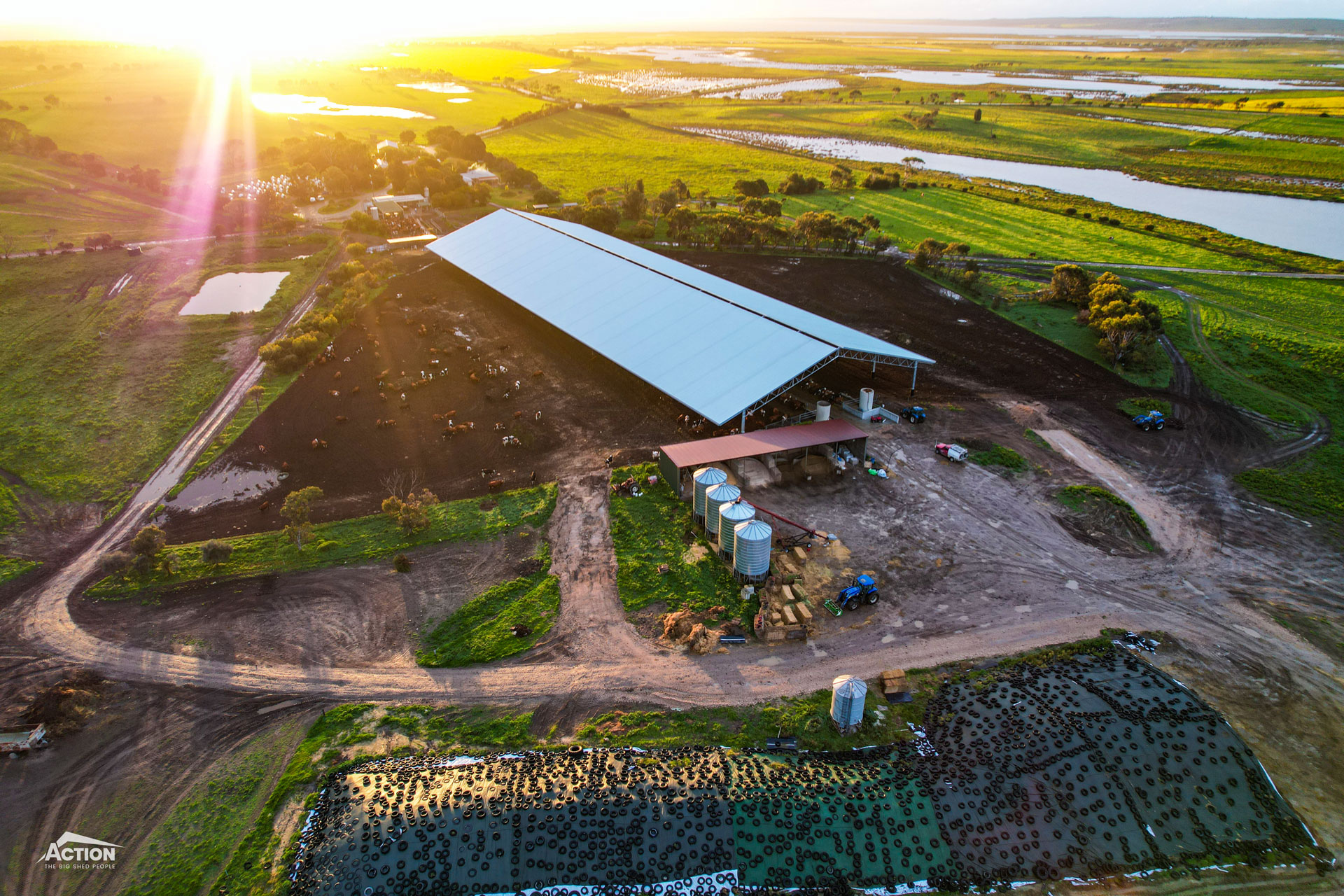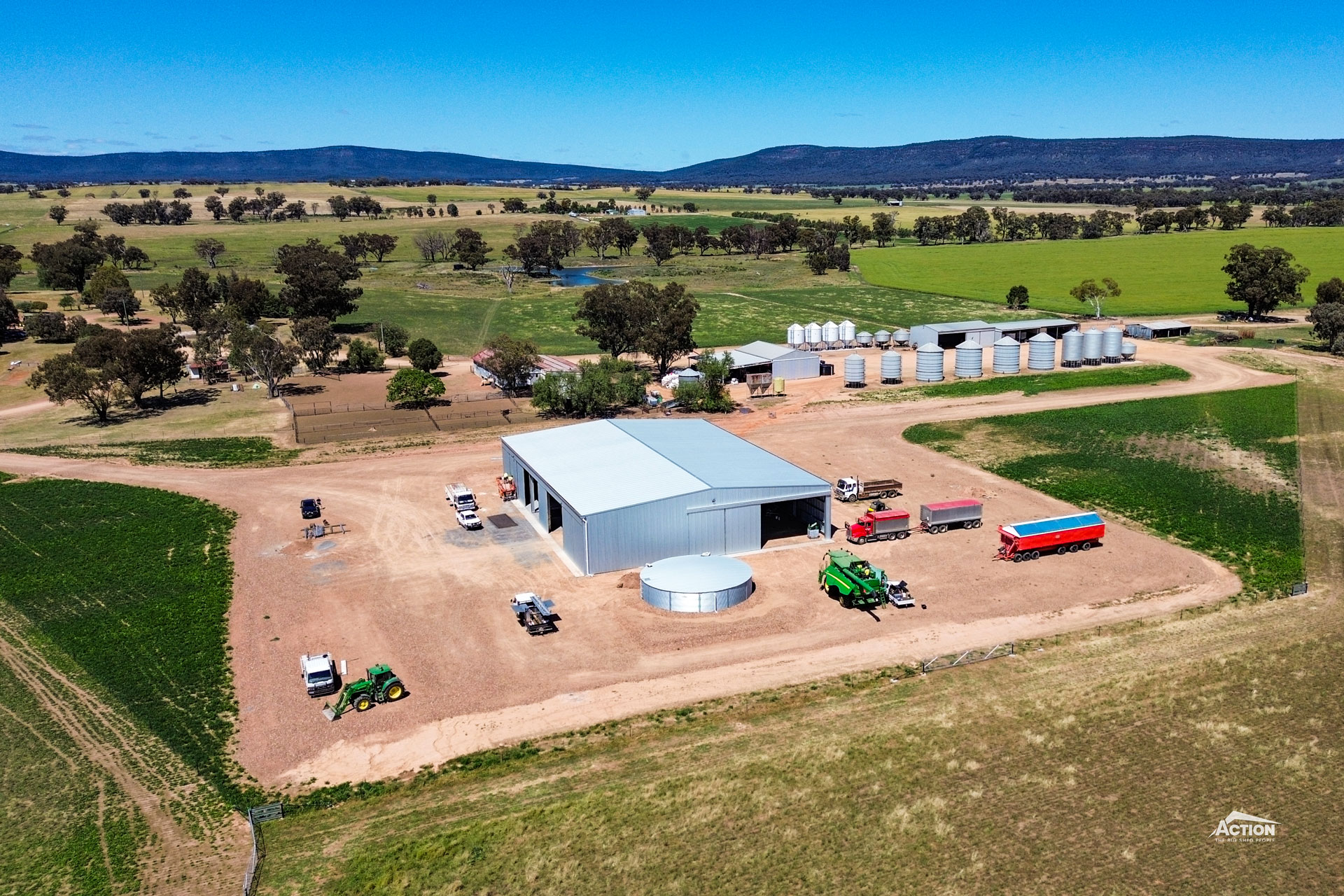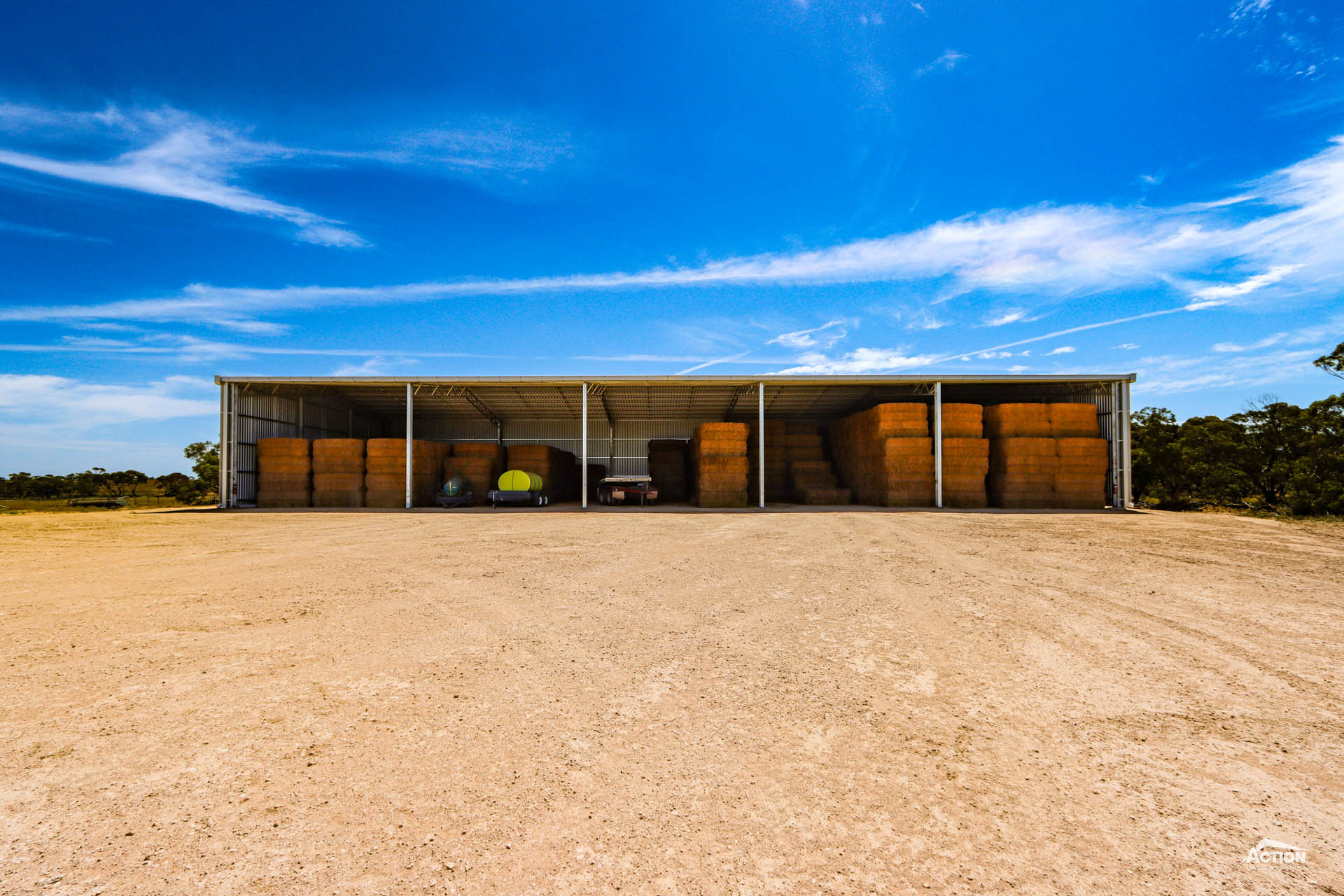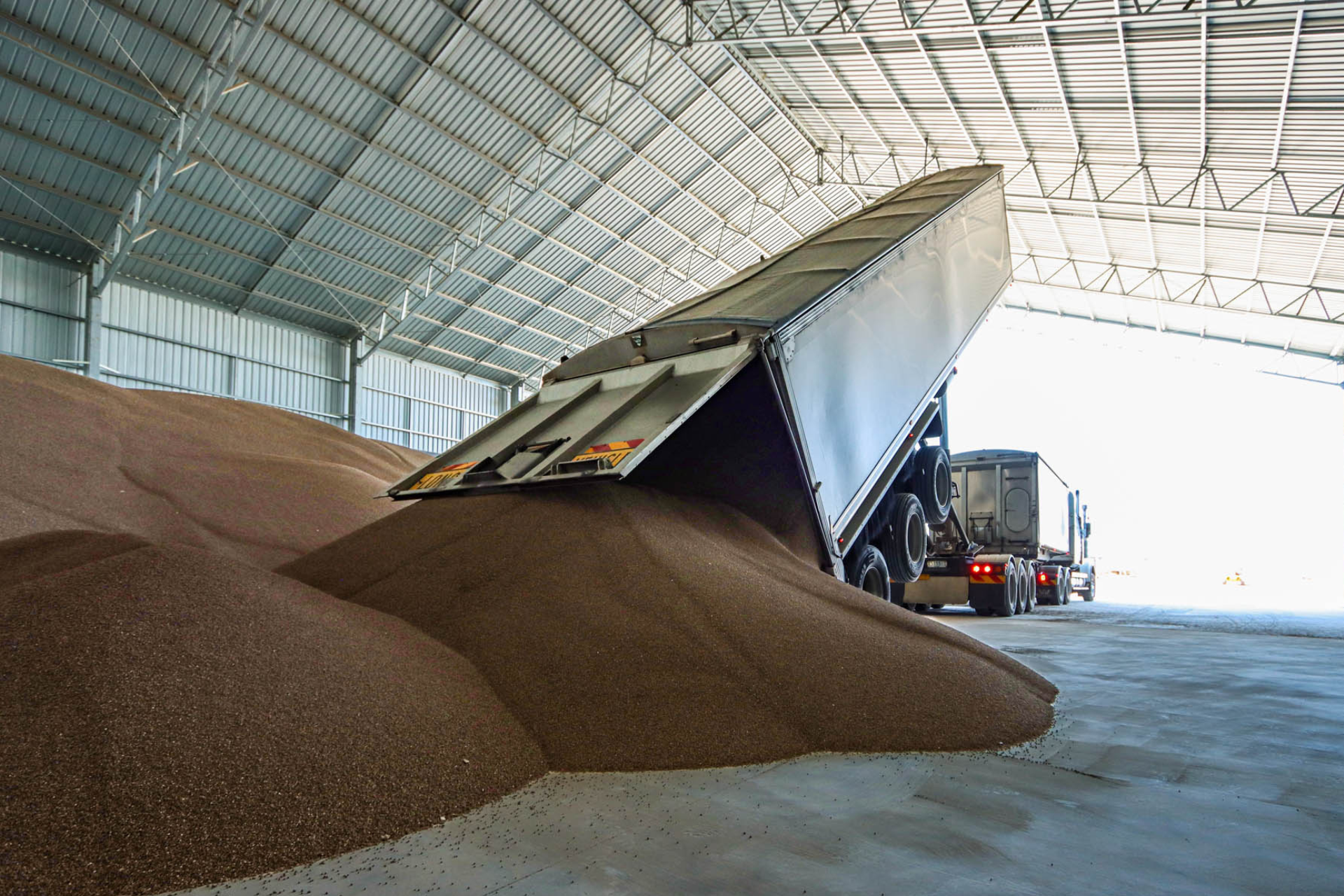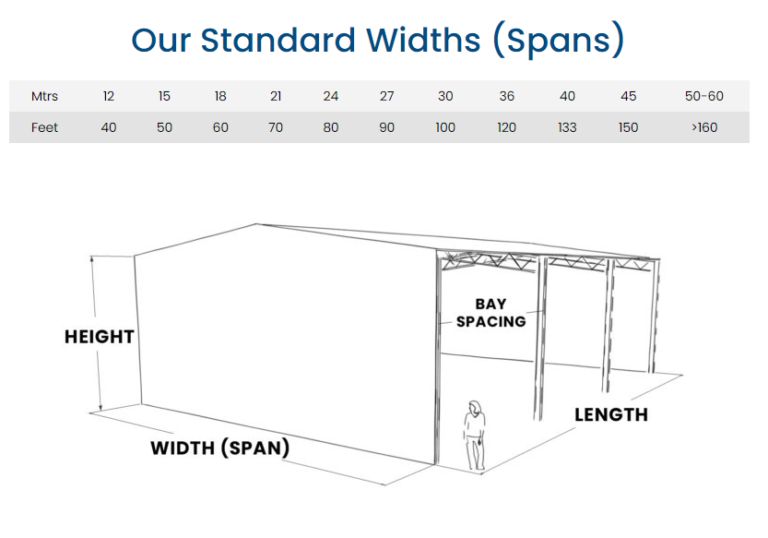Do you have standard size sheds? Are there standard spans for farm sheds?
What is the standard shed span range? What sizes are included? Do I have to use a standard shed span? What are the benefits?
These are all common questions – and good ones too!
It is a good idea to ask about the standard spans available and whether we can accommodate custom size spans.
This is because using a standard shed span can improve the cost-effectiveness, functionality and lead time of your project – but it is not always a practical option.
In this article we discuss our standard spans for farm sheds, answer the frequently asked questions and provide span size suggestions for hay sheds, machinery sheds, grain sheds, covered yards and more!
We hope this article is a helpful guide to deciding if a standard shed span is the right choice for your project.
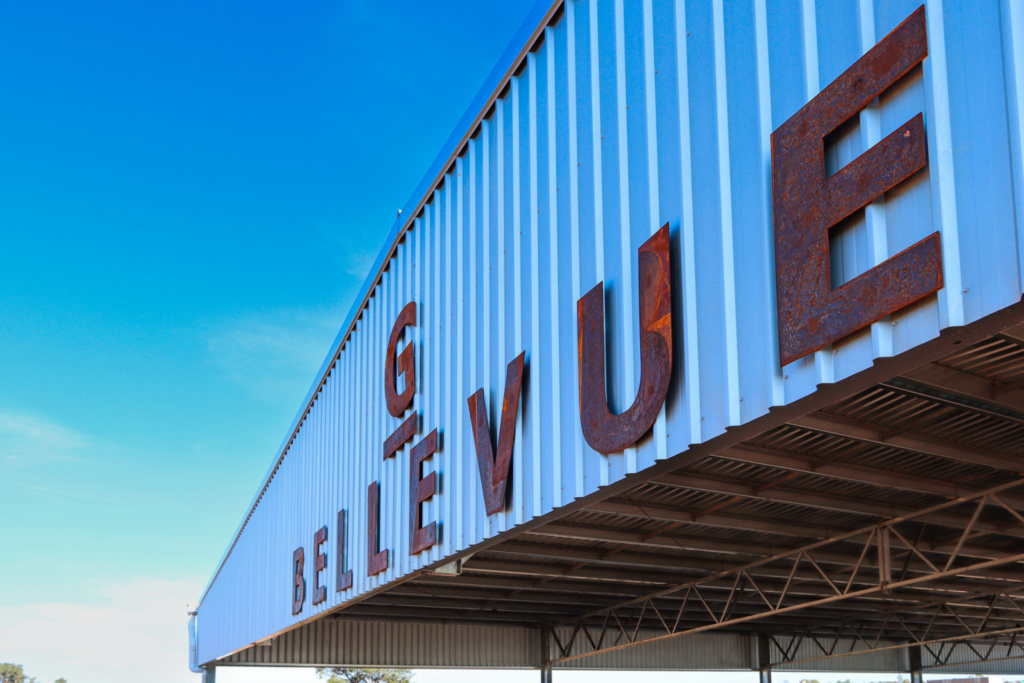
Do You Have Standard Size Sheds?
We don’t have standard size sheds exactly (although we have recently developed a Fertiliser Shed Range), but we do have:
- Standard size spans
- Recommended bay spacings
- Best-practice heights
- Different configuration options
These are used to create cost-effective and functional farm shed designs that can be customised to suit the shed use and the farming operation.
Over the past few years, some of these designs have become really popular.
For example, the 48m (L) x 24m (W) hay shed is a classic.
Customisation options for this could include an open gable end, adding a cantilevered canopy or upsizing the bay spacings to 8.5 metres. The height can be dictated by the machinery used to load and unload the shed.
The 50m x 27m two-sided calving shed with a canopy is another example of a design becoming “best practice” after being successfully used on many dairy farms across South-West Victoria.
Next up we explain the standard shed span range.
What Is The Standard Shed Span Range?
The Standard Shed Span Range is a collection of span sizes that have been researched and developed over several years to suit the agricultural industry and the various farm shed uses.
Part of this development includes manufacturing and setting up truss jigs in the workshop for these sizes.
The range of span sizes starts at 12 metres clear span and increases in 3 metre increments, which leads us to – what sizes are included?
Standard Farm Shed Spans
As mentioned earlier, the standard span range starts at 12 metres wide and increases in 3 metre increments.
Popular Standard Span Sizes
- 15 metres clear span
- 18 metres clear span (A good option smaller scale machinery and hay storage)
- 21 metres clear span
- 24 metres clear span (Most popular!)
- 27 metre clear span (Often paired with a cantilevered canopy for additional coverage)
- 30 metre clear span
- 36 metre clear span
- 56 metre clear span (Commonly used for export hay facilities)
What Are The Benefits Of Using A Standard Span?
There are two main benefits of using a standard span that make choosing one a smart decision.
The first is cost.
Choosing a standard span for your farm shed project will make your shed design more cost-efficient. This is because a new truss jig doesn’t have to be set up to accommodate your custom span size.
Secondly, this also means your shed moves through the factory quickly, improving project time frames.
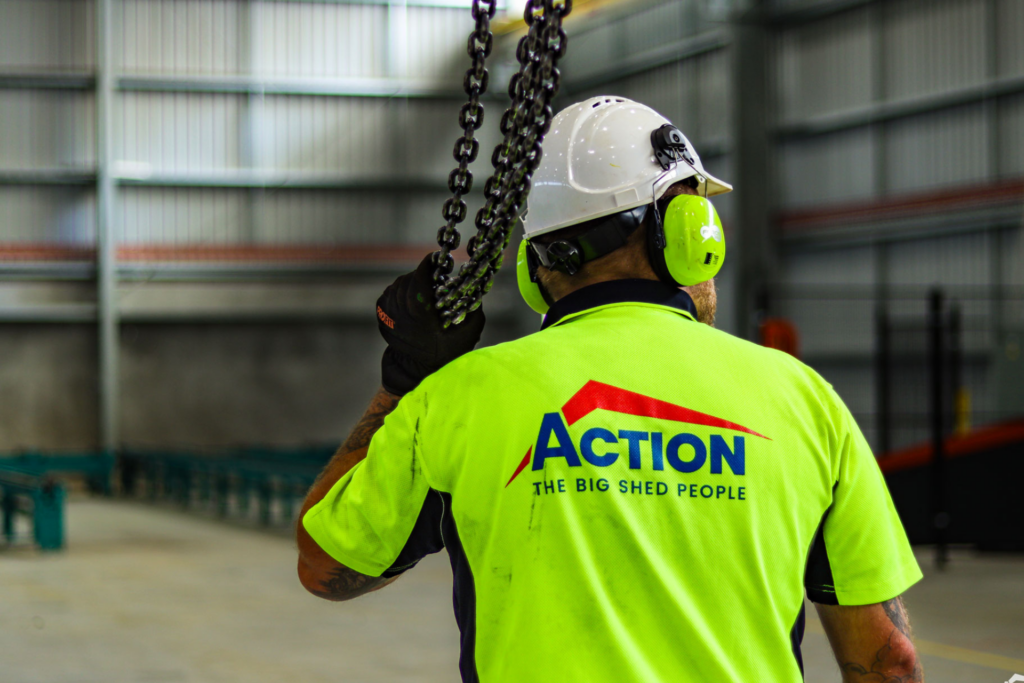
Pricing and lead times are the most common pain points for customers and standard spans play an important role in alleviating and resolving both.
Do I Have To Use A Standard Span?
Before we get further entrenched in our discussion of standard spans, you might be wondering – do I have to use one?
The short answer is no – in fact there are some shed projects where they won’t work.
The main example of this is if you are covering existing sheep yards or cattle yards. In this case, the span will be dictated by the yard layout and any other existing infrastructure we need to work with.
So, we understand that standard spans aren’t always an option. Having said that, if a standard size span works for your project we would recommend choosing it.
There are also potential workarounds you could consider.
For example, if you require 30 metres of coverage but the columns interfere with the site, an alternative option might be to choose a 24-metre span with a 6-metre canopy. This is also a cost-effective way to gain additional coverage without upsizing the shed.
If you aren’t sure whether a standard size span would work for your project, speak with one of our building consultants. They are available to discuss different options to ensure that your shed design is functional – without being cost-prohibitive.
Keep reading to learn about recommended spans and advice for hay sheds, machinery sheds, grain sheds and more!
What Are The Best Hay Shed Spans?
The best standard spans for hay sheds include:
- 15 metres
- 18 metres
- 24 metres
- 27 metres
The 15-metre span and 18-metre span are great options for smaller-scale hay storage while the 24-metre span and the 27-metre span are popular because they are cost-effective and work well with cantilevered canopies.
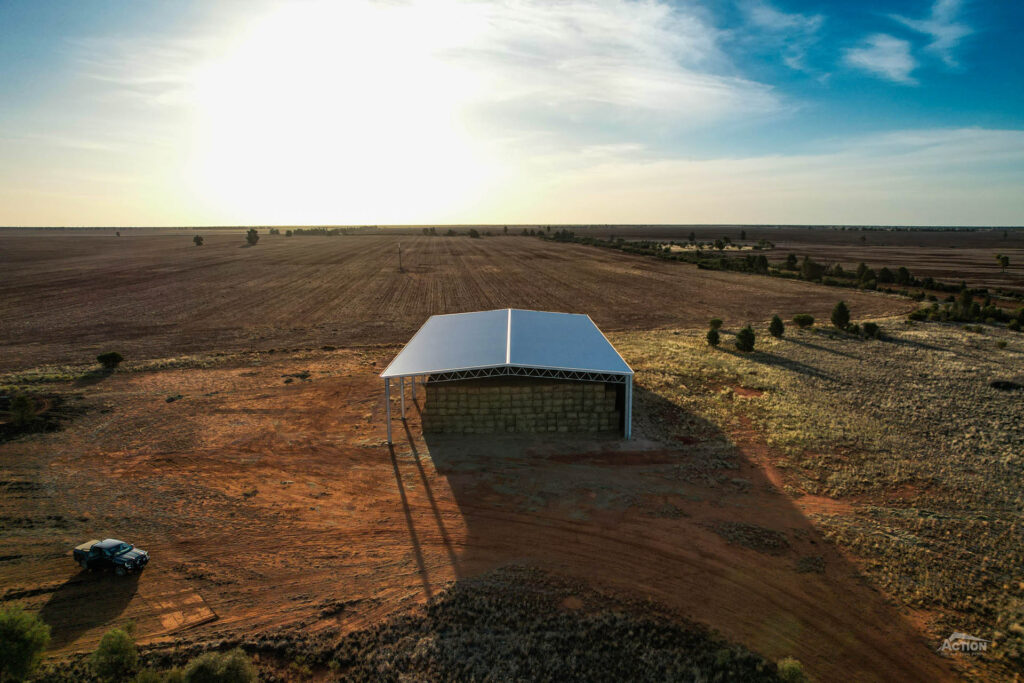
These spans are used in popular hay shed sizes such as:
- 15m (W) x 32m (L) x 6m (H)
- 18m (W) x 40m (L) x 6m (H)
- 24m (W) x 48m (L) x 7.5m (H)
- 24m (W) x 64m (L) x 7.5m (H)
- 27m (W) x 72m (L) 9m (H)
There are other considerations for hay shed sizes too, including bay spacing and height.
Hay Shed Inspiration Gallery
What Are The Best Machinery Shed Spans?
There are two main factors to keep in mind when working out how wide your machinery shed needs to be.
1. If you are accessing your machinery shed from the long side, what is your longest piece of machinery – and how much coverage do you want?
For example, if you are storing a semi-trailer, you will need a minimum of 21 metres. However, most farmers opt for a 24-metre span to completely cover the trailer and provide additional weather protection.
For a b-double, 30 metres of coverage is required. This could be achieved with a 30-metre span, a 24-metre span with 6 metre canopy or a 27 metre span and canopy.
It is also a good idea to consider whether you will be using the shed for hay storage in the future. This might help determine which span is the best fit.
2. If you are accessing your machinery shed from the gable end to take advantage of the wide opening – what machinery width do you need to accommodate to safely and easily load and unload the shed?
Compared to other options such as double bay opening, an open gable end is by far the most cost-effective way to store wide (and long!) machinery.
It is important to choose an adequate span that allows you to store your widest piece of machinery and well as move other machinery in and out of the shed. This helps avoid damage to the machinery and takes the frustration out of machinery storage – it doesn’t have to be a jig saw puzzle!
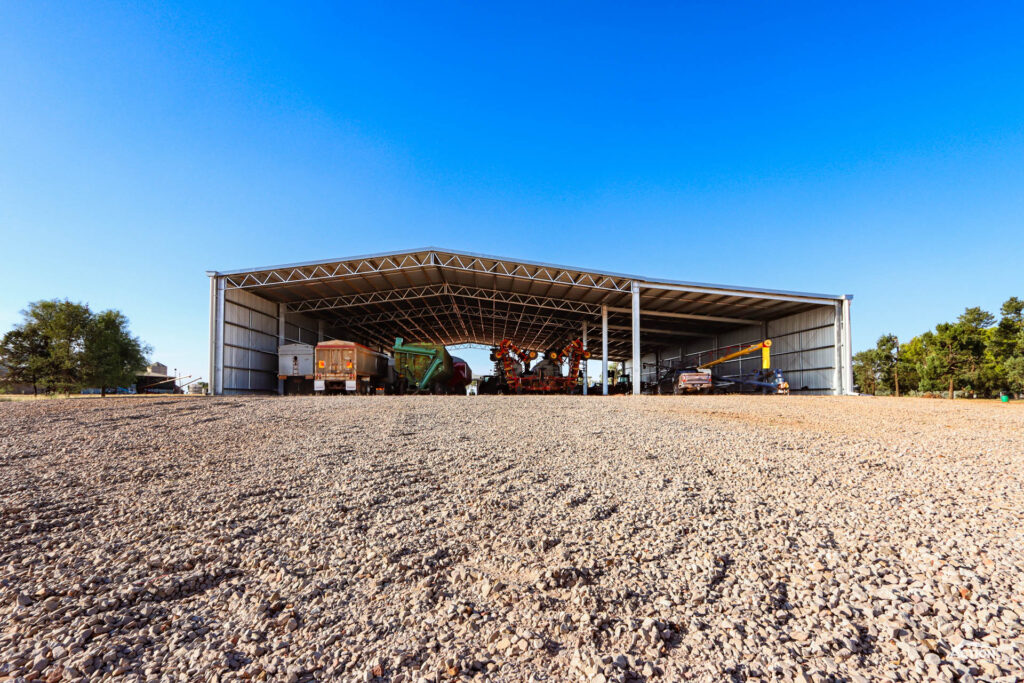
Popular Standard Spans & Sizes For Machinery Sheds
- 18m (W) x 40m (L) x 6m (H)
- 24m (W) x 48m (L) x 6.75m (H)
- 27m (W) x 36m (L) x 6.75m (H)
Machinery Shed Inspiration Gallery
What Are The Best Grain Shed Spans?
The two most popular span sizes for grain storage sheds are 27 metres and 30 metres.
21 metres wide and 24 metres wide can also work well for smaller on-farm storage while large bulk handling facilities often use custom spans like 40 metres and 45 metres.
Choosing the best span for your grain shed project will depend on factors like machinery access, how you will load and unload the shed and whether you intend to repurpose the shed in the future.
For example, if you require semi access and space for turning around inside the shed, your shed will need to have at least a 30-metre span.
Popular grain shed spans and sizes include:
- 24m (W) x 36m (L) x 6m (H). – Stores approx. 3,000 tonnes.
- 27m (W) x 56m (L) x 7.5m (H). – Stores approx. 6,000 tonnes.
- 30m (W) x 80m (L) x 7.5m (H). – Stores approx. 10,000 tonnes.
Grain Shed Inspiration Gallery
What Are The Best Fertiliser Shed Spans?
With fertiliser sheds are becoming must-have infrastructure for cropping enterprises. In response to this increased demand, our building consultants recently developed a Standard Fertiliser Shed Range.
The spans included in this range are 15 metres, 18 metres and 24 metres, however, it is important to note that the standard fertiliser shed sizes are recommendations only and can be easily customised.
Download the brochure to learn more about the sizes, prices and customisation options.
You might also find this article helpful – What Size Fertiliser Shed Do I Need?
Fertiliser Shed Inspiration Gallery
What Are The Best Equine Arena Cover Spans?
Typically, the size of a covered riding arena is dictated by standard arena sizes such as dressage arenas, half size arenas or full-size arenas.
Common arena sizes include 20m (W) x 40m (L), 20m (W) x 60m (L) and 24m (W) x 60m (L).
One rule of thumb is that the length of an arena should be at least twice the width.
Standard size spans that work well for covered horse arenas include:
- 21 metres
- 24 metres
- 27 metres
Equine Arena Cover Inspiration Gallery
What Are The Best Spans For Covered Livestock Yards?
As we mentioned earlier, covered sheep yards and covered cattle yards are one example where standard spans are not always the best option.
This is particularly true if you are covering existing yards or if the site is restricted.
If this is the case, the span size can be customised. Custom bay spacings and column lengths are also common for yard covers.
Standard size spans can work really well for yard cover projects on greenfield sites though.
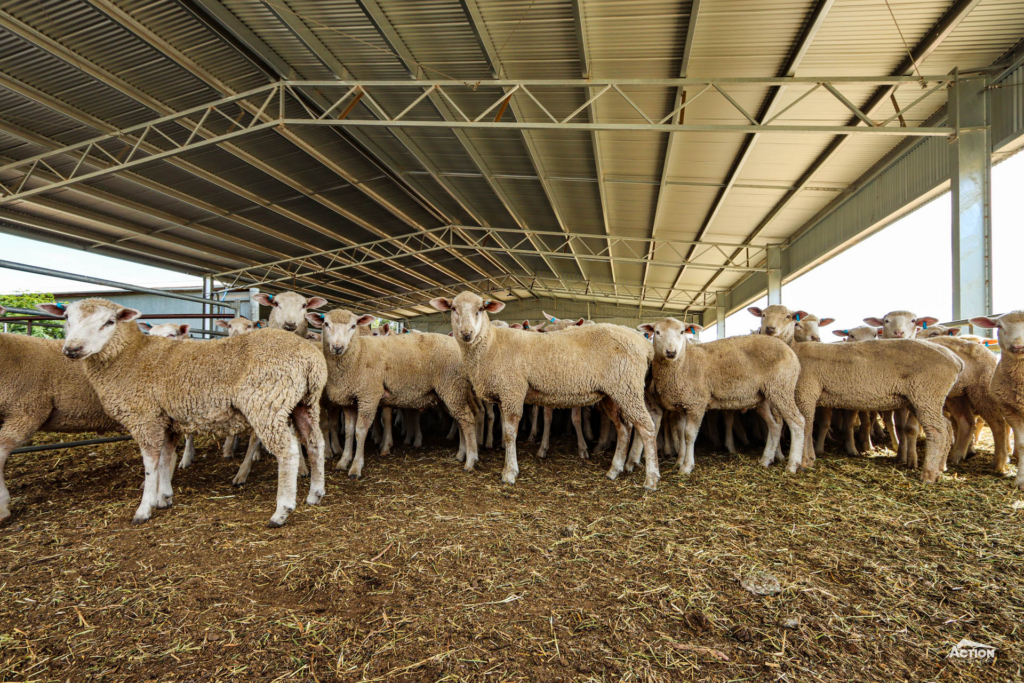
Recent yard cover builds using standard size spans include:
- 18m (W) x 30m (L) x 3.5m (H) sheep yard cover
- 21m (W) x 30m (L) x 3m (H) sheep yard cover
- 24m (W) x 48m (L) x 5m (H) cattle yard cover
- 32m (W) x 36m (L) x 3.5m (H) sheep yard cover
As you can see sizes vary which is due to the different yard layouts and whether or not the yard cover is connected to a shearing shed.
One consideration when choosing a span for your yard cover is to allow an additional 1 -2 metres coverage on each side – or if the column placement interferes with the yards, you could achieve this with a canopy. This helps provide complete protection from the prevailing weather.
Yard Cover Inspiration Gallery
What Are The Best Spans For Feedlot Sheds & Dairy Barns?
One of the most important considerations for feedlot sheds and dairy barns such as loafing barns is achieving effective airflow to keep cattle cool, keep bedding dry and and remove ammonia build up.
Choosing the right span size can impact the effectiveness of the airflow. Our computational fluid dynamics studies show that heat can collect in the centre of a wider span shed.
To avoid this issue, spans we commonly recommend for feedlot covers and barns are 24 metres and 27 metres with the option of side canopies. Or you could consider a configuration with a centre access lane and side feed bunks.
There are other considerations such as bunk space and stocking density that will also dictate the best-fit configuration and span.
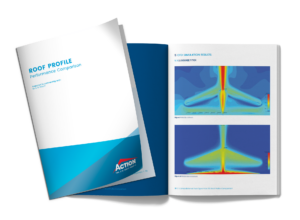
Speak with our building consultants to learn more about our airflow studies and how we use this research along with bunk space and stocking density requirements to create effective and functional shed designs.
You might also find these articles helpful:
What Size Feedlot Cover Should I Build?
What Size Loafing Barn Should I Build?
Feedlot Sheds & Dairy Barns Inspiration Gallery
What Else Do You Need To Know?
That’s a wrap on standard spans for farm sheds. The span width of a farm shed is just one dimension that you need to consider though!
It is important to pay attention to the height of the shed, the length of the shed and the configuration.
For example, the height of a shed one is difficult to change once the shed has been installed – and a lack of clearance height can be really frustrating and dysfunctional!
So, here’s some further reading for you!
- How High Should I Build My Shed?
- Grain Shed, Fertiliser Shed & Hay Shed Size Calculator
- Open Web Truss Versus UB Rafter
- Drive-Through Sheds (Pros, Cons & Prices)
- Feedlot Bunk Space & Density Calculator
Browse the Learning Hub for more information and articles. Or call 1800 687 888 to speak with one of our building consultants about your shed and the best standard span.

